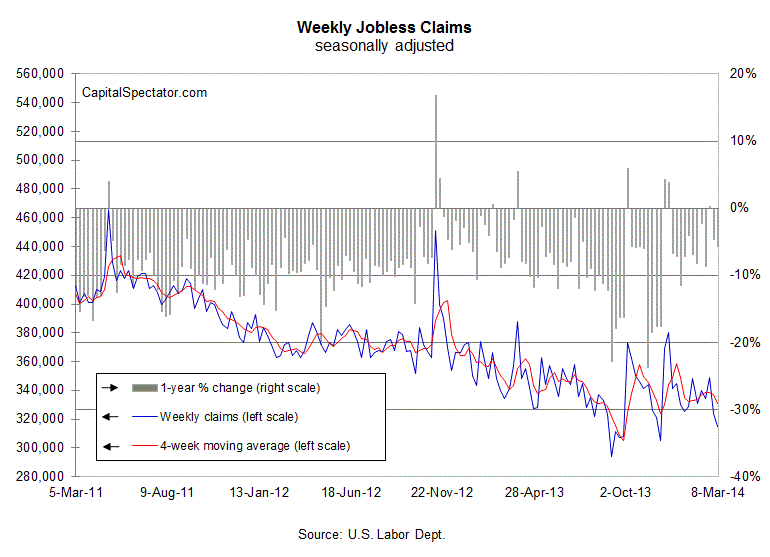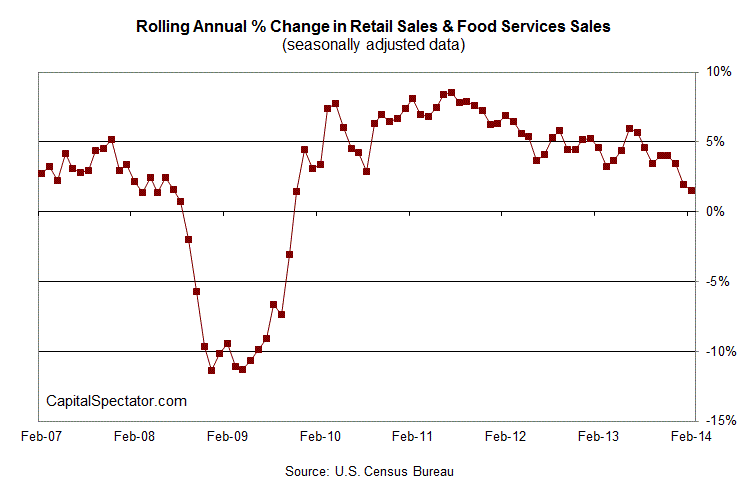Retail spending revived last month and new filings for unemployment benefits declined last week, according to this morning’s reports from the government. In both cases the changes beat expectations with surprisingly upbeat data. But there are two issues that remain worrisome. First, the year-over-year rate of growth for retail sales is still falling. Second, the annual decline in jobless claims in today’s release remains modest by recent standards. But for now, the economic news is positive in terms of the latest changes, even though there’s still plenty of room for doubt about what’s in store for the months to come.
Let’s start with jobless claims, which dropped 9,000 last week to a seasonally adjusted 315,000—the lowest since last November. That tells us that the labor market’s still growing and appears poised to expand in the immediate future. As an added bonus, the four-week moving average is again falling in a meaningful degree, slipping to 330,500 for the week through March 8, the lowest so far this year.
One area for concern is the relatively slow rate of decline in new claims vs. year-earlier levels. Last week’s year-over-year decrease was around 6%. That’s certainly healthy, assuming it rolls on. But it’s also true that we’ve seen a modest slowdown in the decline rate over the past several months. It’s too soon to say if this is noise or an early warning sign of trouble. For now, however, the fact that jobless claims are moving in the right direction is all that counts, although the next several updates will tell us if there’s cause for concern in the months to come.
Moving on to retail sales, the sight of a revival in consumer spending in February also brings some much-needed reassurance from the hard data that the macro trend is still moving forward. Retail sales increased 0.3% last month vs. January—the first monthly gain since last November. The problem, however, is that trend for this critical series is still falling. As you can see in the chart below, the year-over-year growth rate for spending has slumped to just 1.5%, or the weakest annual comparison in more than six years!
Even more troubling is the realization that the annual growth in retail sales has been on a slow but persistent slide for some time–since 2011, to be precise. The margin for comfort is wearing awfully thin as we inch ever closer to zero.
For now, the fact that most of the other key macro and financial indicators are still trending positive suggests that retail spending will stabilize if not strengthen in the near future. But that’s just a guess and so it’s on to the next batch of numbers in search of more perspective. That includes tomorrow’s update on consumer sentiment via Reuter’s/University of Michigan and the Fed’s February estimate on industrial production due out on Monday. Meantime, a wary optimism prevails when we look at the big picture trend, as suggested by the recent updates to the Macro Markets Risk Index and the US Economic Profile.

